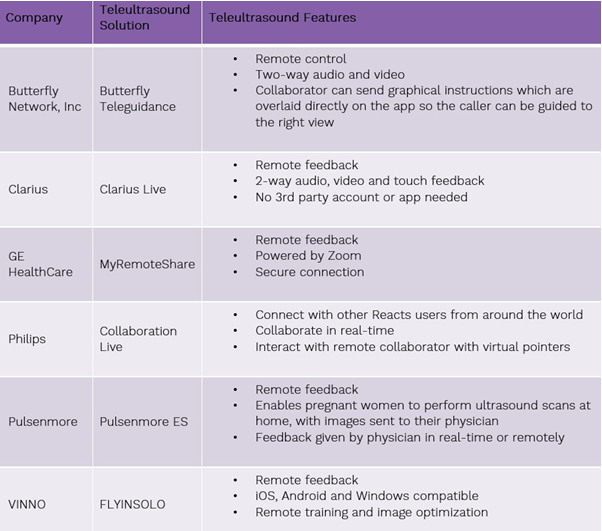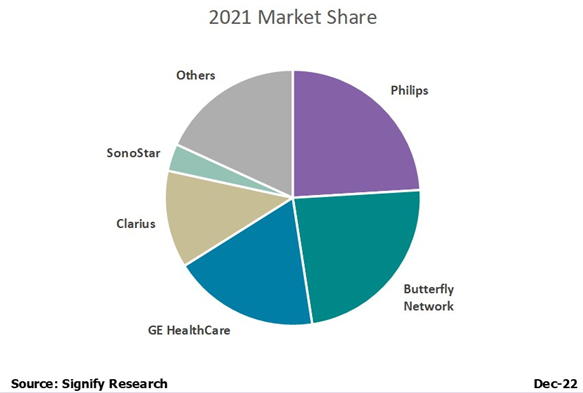By Karen Koblan, Ultrasound Solutions Corp.
We are close to a new era in ultrasound technology. From helping healthcare specialists detect several diseases such as cancerous cells to showing real-time images inside the mother’s womb, ultrasound technology is a go-to way for various specialists to deal with a wide range of diseases and tasks.
Let us take a closer look at how the emerging technologies of ultra-compact ultrasound, 3D and 4D ultrasound, artificial intelligence (AI), tissue harmonic imaging, and volumetric ultrasound are impacting the future of ultrasound imaging.
1. Ultra-Compact Ultrasound
Ultra-compact or portable ultrasound machines have taken imaging technology by storm. Previously, medical professionals had to use large, bulky, and complicated ultrasound machines for treating patients. Now, healthcare and clinical laboratories are opting for these ultra-compact imaging machines due to their portability and ease of use.
Portable ultrasound machines are also being used by healthcare specialists. In particular, portable ultrasound machines are useful in detecting UTIs. These machines offer a number of advantages over standard methods of UTI detection, such as computed tomography (CT) or magnetic resonance imaging (MRI). Portable ultrasound machines provide superior imaging quality and allow for real-time image guidance. These machines are perfect for primary care settings.
2. 3D And 4D Real-Time Ultrasound Imaging
The use of three-dimensional (3D) real-time imaging ultrasound technology is being driven by the demand for more accurate diagnostic images. This type of imaging provides a clear picture of the internal organs and can be used to detect abnormalities such as tumors. It is becoming more popular because it gives a better view of what is going on inside the body.
3D real-time imaging is becoming more popular for fetal ultrasound. This technology gives a more detailed view of the baby. This technology is new, and there is no standard protocol for its use yet. However, more hospitals are expected to start using this technology in the near future.
Further, this technology helps determine diseases with ease. It helps to achieve better visuals of human body organs. Compared to 2D imaging technology, 3D ultrasound imaging technology also takes less time.
Four-dimensional (4D) ultrasound imaging technology is even more convenient for healthcare specialists such as gynecologists. Compared to 3D ultrasound technology, 4D ultrasound shows live motion with the help of several images. With this technology, gynecologists can observe the live movement of the baby in the mother’s womb.
4D real-time ultrasound imaging provides a lot of benefits that traditional two-dimensional imaging does not, especially to gynecologists. This type of imaging gives a more complete view of the fetus, as well as showing how the fetus is developing over time. This technology can also be used to monitor multiple fetuses simultaneously. This is beneficial for high-risk pregnancies.
3. Artificial Intelligence
AI or artificial intelligence has a lot of potential in the medtech and imaging industry, including in the area of ultrasound technology. Ultrasound waves are used to create images of the inside of the body. This technology has been used for diagnostic purposes for many years. However, interpreting these images can be tricky, even for experienced radiologists. This is where AI comes in to help.
AI-enabled ultrasound machines can quickly and accurately interpret images. This can help doctors diagnose and treat patients faster. Additionally, AI can help identify patterns that human observers may miss. For example, AI can help identify early signs of several serious diseases, including cancer, heart disease, and stroke. This technology has the potential to save lives by providing earlier diagnosis and treatment.
4. Tissue Harmonic Imaging
Tissue harmonic imaging (THI) is another new emerging technology that's rapidly changing the use of standard ultrasound techniques. THI is an advanced technology that produces images with greater clarity than standard ultrasound. This means that clinicians can make more accurate diagnoses using THI, and this makes it particularly well-suited for use in cardiac imaging.
In addition, THI technology requires less power and can be performed more quickly, making it more convenient for both patients and clinicians. Further, THI is less likely than standard ultrasound to produce artifacts, which can often lead to inaccurate diagnoses
5. Volumetric Ultrasound
In general, volumetric imaging creates images of objects in space by combining multiple 2D images taken from different angles. This allows for a more complete view of an object than would be possible with just a single image. Now, the same concept is being used for medical diagnosis purposes.
Volumetric ultrasound provides 3D images of the body by steering a 2D array transducer in a scan format, using sound waves and computer algorithms to create images of the inside of the body. This imaging modality can be helpful in identifying cancer cells, tumor cells, and other abnormalities, as well as diagnosing various conditions, such as various heart diseases. Further, volumetric ultrasound is often used to help guide procedures such as biopsies and needle injections.
It is often used to image the fetus during pregnancy. It can also be used to image other organs and structures, as well as to assess relationships between different structures of human body organs. It is a great way to see small structures and is very clear.
Final Thought
Ultra-compact ultrasound, 3D and 4D ultrasound, artificial intelligence (AI), tissue harmonic imaging, and volumetric ultrasound are impacting – and will continue to impact -- the future of ultrasound technology, benefiting both healthcare providers and patients.

